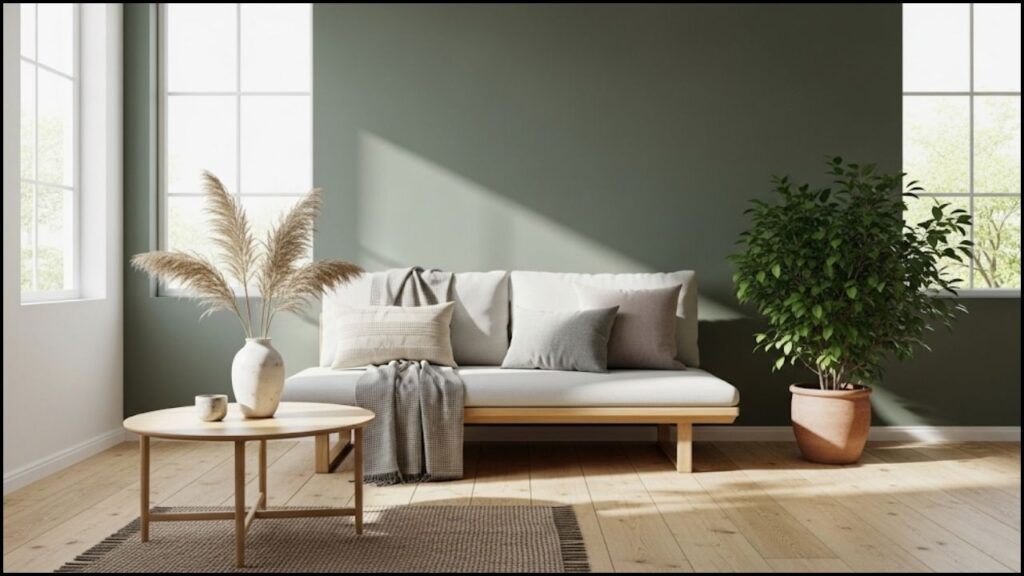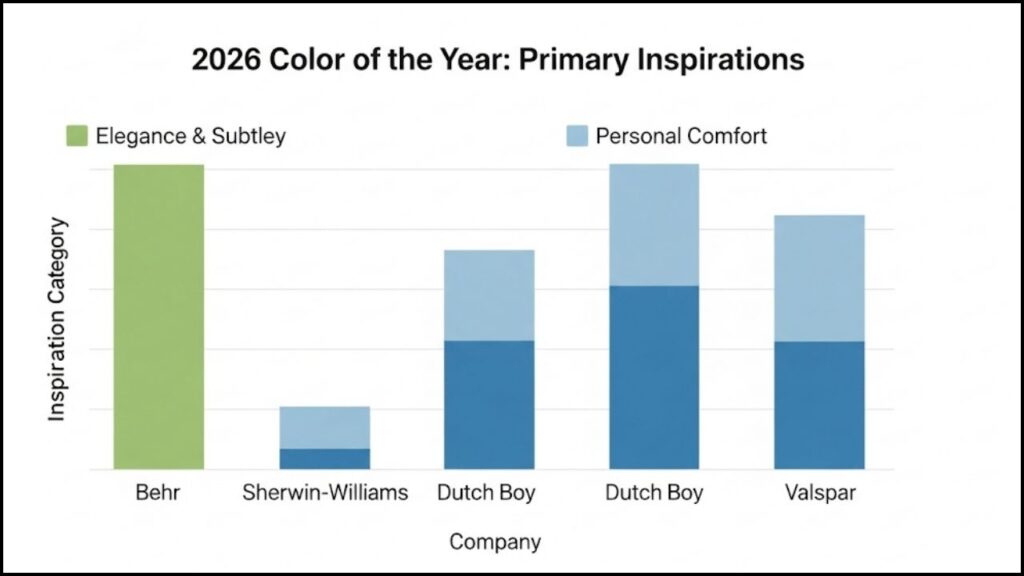As major design and forecasting firms begin to unveil their selections, the conversation around the 2026 Color of the Year is officially underway. Behr Paint Company has announced its pick, “Hidden Gem,” a smoky jade hue, marking one of the first major entries into the annual color forecast cycle. The choice signals a broader industry trend toward nature-inspired and calming shades, a movement that analysts say reflects a global desire for stability and introspection in a period of rapid change.

The annual Color of the Year announcements, while rooted in consumer product marketing, have evolved into a cultural barometer. These selections are not arbitrary; they are the result of extensive research by color experts and trend forecasters who analyze shifts in fashion, art, technology, and socio-economic conditions. The chosen hues often embody the collective global mood and aspirations for the upcoming year.
The Rise of Soothing, Natural Palettes
The initial selections for 2026 appear to prioritize a sense of calm and connection to nature. This trend follows several years of bold, vibrant, or warm hues, suggesting a pendulum swing away from high-energy tones. Experts at forecasting agencies and paint companies are pinpointing shades that evoke feelings of peace, renewal, and grounding.
One of the first to be announced, Behr’s “Hidden Gem” (N430-6A), is described as a versatile smoky jade. In a press release, Erika Woelfel, Vice President of Color and Creative Services at Behr Paint, stated that the color “captures a spirit of understated elegance and timeless sophistication.” According to new research commissioned by the company, two out of three Americans believe that a room painted with this color would “create a sense of peace in their home” and “stand the test of time.” This focus on durability and tranquility reflects a consumer desire for enduring design choices that offer a reprieve from the fast pace of modern life.
2026 Color of the Year: Broader Industry Trends
The selection of a specific shade by a major paint manufacturer is just one part of a much larger trend forecasting ecosystem. Companies like WGSN and Coloro are key players in this space, providing early insights for industries far beyond home decor. These firms predict color trends for fashion, beauty, product design, and graphic art years in advance.
For 2026, WGSN and Coloro have already identified “Transformative Teal” as their key hue. In a report, WGSN describes this color as a “fluid fusion between dependable dark blue and aquatic green,” chosen to represent an era of change and redirection. The selection is tied to a forecast for increased consumer demand for ecological responsibility and an “Earth-first mindset.” This perspective links color directly to pressing global issues, positioning the hue as a symbol of resilience in the face of complex climate challenges.
The different names and shades “Hidden Gem” and “Transformative Teal” highlight a subtle but significant divergence in corporate messaging, yet the underlying theme remains consistent: a move toward greens and blues that are both serene and purposeful.

The Global Zeitgeist and the Power of Color
The process of choosing a Color of the Year is not a simple marketing exercise. It involves a deep analysis of the zeitgeist—the defining spirit or mood of a particular period in history. The Pantone Color Institute, which typically makes its announcement toward the end of the year, famously chooses its hue after a global team of color experts and anthropologists conducts year-round trend analysis.
According to Laurie Pressman, Vice President of the Pantone Color Institute, the selection is a reflection of what people are looking for and what they feel they need in the upcoming year. The choice is a culmination of research that spans multiple fields, from the film industry and traveling art exhibits to socio-economic conditions and new technologies. This comprehensive approach is what gives the Pantone selection its significant influence across various industries. While Pantone’s 2026 color has not yet been named, it is widely anticipated to continue the trend toward colors that provide emotional and psychological grounding.
The Influence on Consumer Behavior
Once announced, these colors permeate the consumer landscape, appearing on everything from apparel and home goods to electronics and packaging. This phenomenon is supported by research, with studies showing that color is a significant factor in purchasing decisions. A WGSN survey cited in their report on “Transformative Teal” found that 98% of respondents said their purchasing decisions are influenced by color.
Companies strategically integrate these trending colors into their product lines to capitalize on the public interest and to offer a sense of novelty. For example, in celebrating its 2026 selection, Behr Paint Company launched a $50,000 sweepstakes to encourage consumers to use the color. This type of marketing demonstrates the commercial weight of the Color of the Year title.
Looking Ahead to Future Announcements
While Behr and WGSN/Coloro have set the stage, the full picture of the 2026 color landscape is far from complete. Major announcements are still expected from other leading paint manufacturers, including Sherwin-Williams and Benjamin Moore, as well as the highly anticipated reveal from the Pantone Color Institute. Each company’s selection will add a new perspective to the collective narrative, providing a rich tapestry of colors that will likely dominate design and commerce in the year to come.
Analysts anticipate that the emerging themes of tranquility, sustainability, and personal comfort will remain central to these upcoming choices. The 2026 Color of the Year will ultimately serve as a visual manifestation of a society seeking to find balance and meaning in an increasingly complex world.
Valspar Names “Warm Eucalyptus” as 2026 Color of the Year, Highlighting a Collective Desire for Calm
